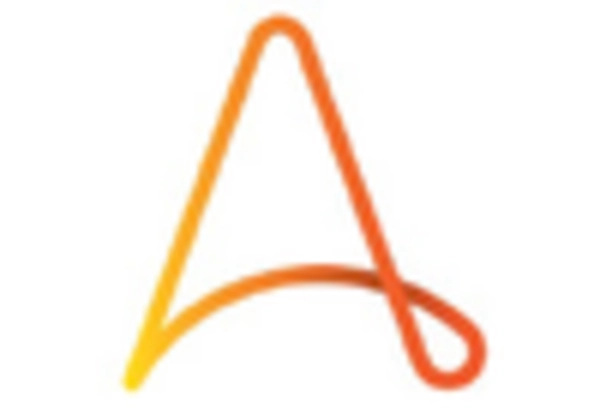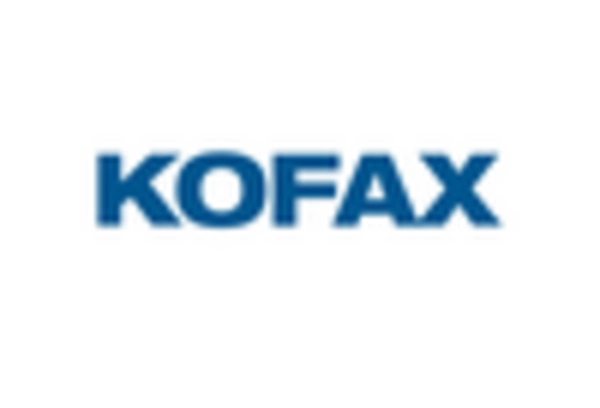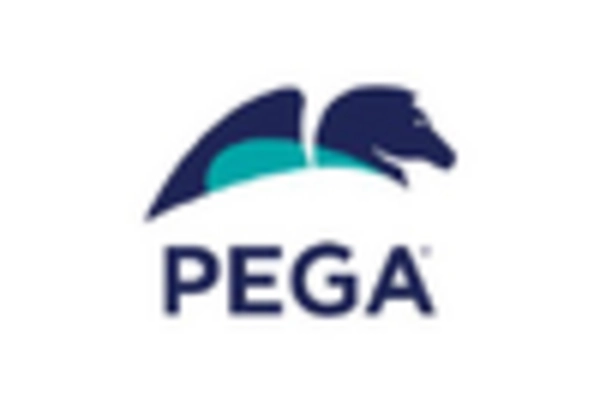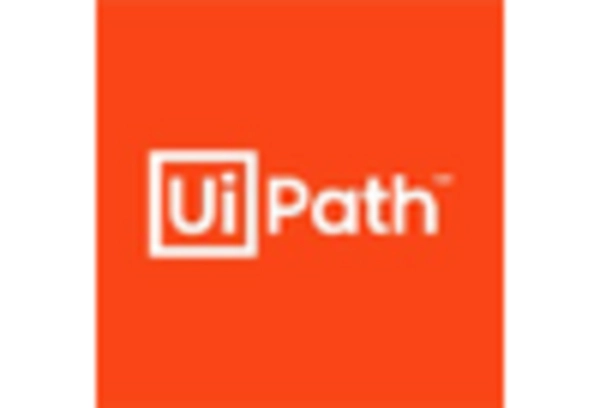Growing Focus on Customer Experience
The RPA Hyperautomation Market is increasingly influenced by the growing emphasis on enhancing customer experience. Organizations are leveraging automation to streamline customer interactions, reduce response times, and personalize services. By automating routine tasks, businesses can allocate more resources to customer engagement and satisfaction initiatives. Recent studies indicate that companies utilizing RPA solutions can improve customer satisfaction scores by up to 40%. This focus on customer-centric automation is driving investments in RPA technologies, as organizations recognize the importance of delivering exceptional experiences in a competitive marketplace. As customer expectations continue to evolve, the RPA Hyperautomation Market is poised for growth, with businesses seeking innovative solutions to meet these demands.
Advancements in AI and Machine Learning
The integration of advanced AI and machine learning technologies is a pivotal driver in the RPA Hyperautomation Market. These technologies enable organizations to automate complex tasks that were previously reliant on human intervention. By leveraging AI, businesses can enhance decision-making processes, improve accuracy, and reduce the time required for task completion. The market for AI in automation is projected to reach USD 15 billion by 2026, indicating a robust growth trajectory. This advancement not only streamlines operations but also empowers organizations to harness data-driven insights, thereby fostering innovation and agility. As AI continues to evolve, its impact on the RPA Hyperautomation Market is likely to be profound, reshaping how businesses operate and compete.
Cost Reduction and Resource Optimization
Cost reduction remains a primary driver in the RPA Hyperautomation Market, as organizations strive to optimize resource allocation and minimize expenses. Automation technologies enable businesses to perform tasks more efficiently, leading to significant savings in labor costs and operational expenditures. Reports suggest that companies implementing RPA can achieve a return on investment of up to 300% within the first year. This financial incentive is compelling organizations to invest in automation solutions that not only reduce costs but also enhance overall productivity. As the pressure to maintain profitability intensifies, the RPA Hyperautomation Market is likely to experience accelerated growth, with businesses increasingly recognizing the value of automation in achieving their financial objectives.
Regulatory Compliance and Risk Management
In an increasingly regulated environment, the RPA Hyperautomation Market is driven by the need for enhanced compliance and risk management. Organizations are adopting automation solutions to ensure adherence to regulatory requirements while minimizing the risk of human error. Automation tools can facilitate real-time monitoring and reporting, thereby improving transparency and accountability. The market for compliance automation is expected to grow significantly, with estimates suggesting a potential increase of 20% annually. This trend underscores the importance of automation in mitigating risks associated with non-compliance, which can lead to substantial financial penalties. As businesses prioritize compliance, the RPA Hyperautomation Market is likely to expand, offering solutions that address these critical challenges.
Increased Demand for Operational Efficiency
The RPA Hyperautomation Market is witnessing a surge in demand for operational efficiency across various sectors. Organizations are increasingly adopting automation technologies to streamline processes, reduce operational costs, and enhance productivity. According to recent data, companies that implement RPA solutions can achieve up to a 30% reduction in operational costs. This trend is driven by the need for businesses to remain competitive in a rapidly evolving market landscape. As organizations seek to optimize their workflows, the RPA Hyperautomation Market is expected to grow significantly, with projections indicating a compound annual growth rate of over 25% in the coming years. This growth reflects a broader shift towards automation as a strategic imperative for enhancing efficiency and driving business success.

















Leave a Comment